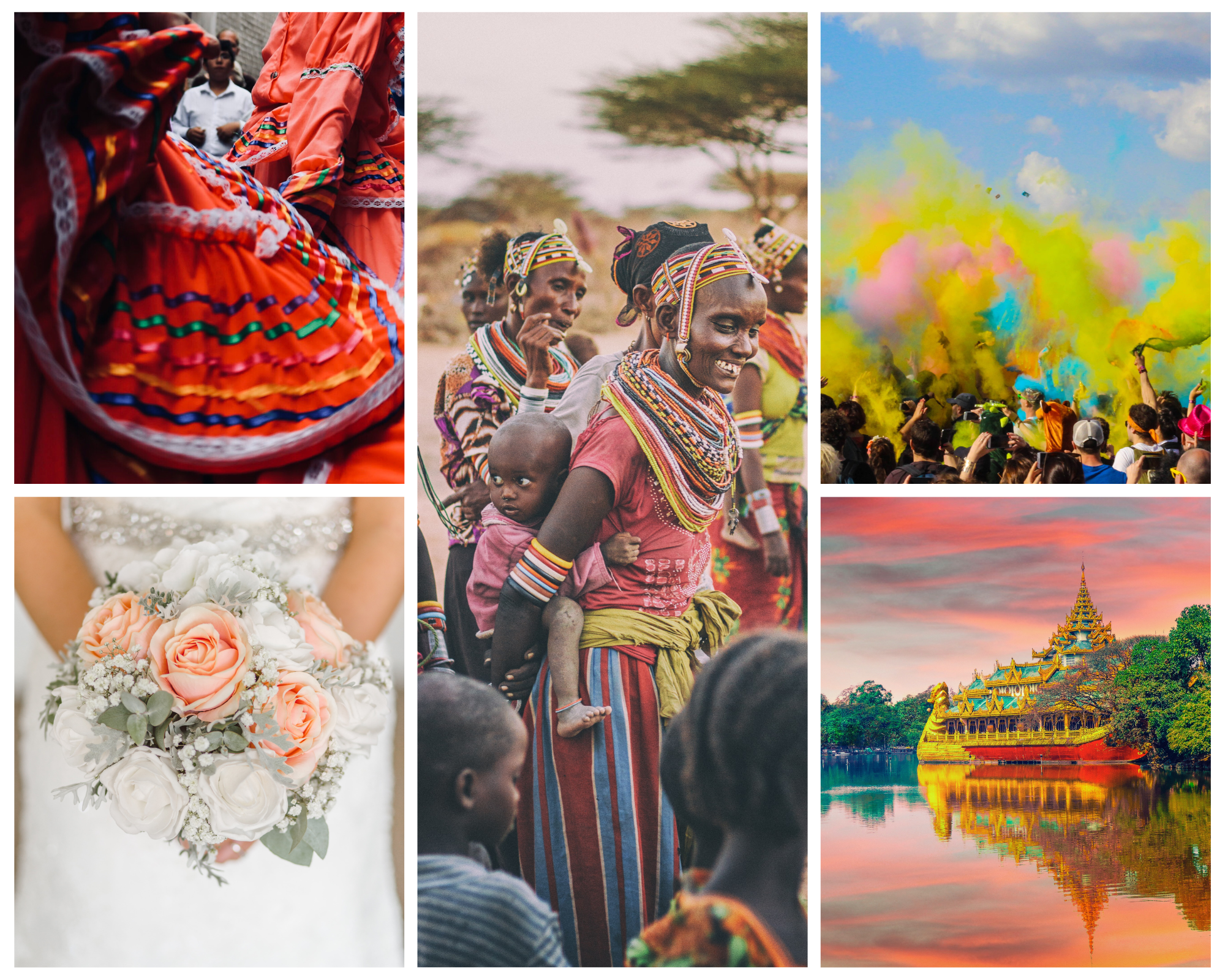Significance Of Different Colors For Different Cultures

Colors have significant meanings and associations in different cultures around the world. In many cultures, colors are used to symbolize specific emotions, beliefs, and ideas. To really think about the colors we wear and the meaning of the colors we use on a daily basis can be interesting. Here are some examples of what different colors represent in different cultures around the world.
Blue
- In many western countries, blue can represent wisdom, confidence, trust and calmness. As well it can represent masculinity and the birth of a boy.
- In Native American culture, blue is often associated with the sky and the spirit world. It can also symbolize purity and clarity.
- In China it can be considered to be a feminine color and can also be associated with immortality and eternity.

- Many Eastern cultures associate blue with immortality, spirituality and heaven. Hinduism associated with the God Krishna, which represents divine joy and love.
- In Middle Eastern culture, blue is often associated with protection against the "evil eye." It is also sometimes associated with the Prophet Muhammad and the religion of Islam.
- Latin American countries associate blue with religion and mourning. Blue can be associated with the robes of the Virgin Mary.

Red
- In Western cultures red has both positive (love and excitement) and negative associations (danger and urgency). It also can still be associated with communism in former Eastern European block countries. As well as can be associated with Christmas especially when combined with green.
- In Chinese culture, red is an auspicious color that symbolizes good luck, prosperity, and happiness. It is often used during important celebrations such as the Chinese New Year, weddings, and other festive occasions. In Japan, red is a color that is associated with life and vitality, and is often used in the Shinto religion as a symbol of purity and strength.

- Countries in Latin America associate red with religion when paired with white.
-
In India, red is a color that symbolizes purity, fertility, and marital bliss. It is often worn by brides on their wedding day, and is also associated with the goddess Durga, who is often depicted wearing red.
- Middle Eastern countries can associate red with danger or caution. Iran and Egypt can associate with luck and good fortune.
- In many African cultures, red is a color that symbolizes life, vitality, and the power of the sun.

Yellow
- In most Middle Eastern and Western countries yellow is mainly positively associated with sunshine, joy and happiness. But in Germany it can be associated with jealousy and in France with jealousy, weakness and betrayal.
- Latin American countries and Egypt can use yellow as a color for mourning.

- In many Asian countries such as Japan it is worn by the ruling royal class and is scared. As well as in many African countries it is used by high-ranking society members and is associated wealth, royalty, and prosperity.
- In Native American culture, yellow is often associated with the east, the direction of the rising sun. It can also represent the qualities of knowledge, wisdom, and mental clarity.

Green
- In western countries green can be positively associated with luck, growth, renewal and freshness. It can also have a negative association with greed or jealousy.
- Green can represent Independence in Mexico.

- Green is also associated with Islam representing fertility, luck and wealth. Green is a significant color as it is said to have been Prophet Muhammad's favorite color.
- Asian colors associate green with life, fertility and nature. As well as countries like Indonesia associate it with exorcism and China associates green with infidelity.
- In many African cultures, green is associated with life, growth, and fertility.

Orange
- Western countries may associate orange with harvest, energy, creativity and the season of autumn. Netherlands can associate it with royalty.
- In Hindu culture, orange is often associated with purity and spirituality. It is the color of the robes worn by Hindu swamis and sannyasis, who have renounced material possessions to pursue a spiritual path.
- In Buddhist culture, orange is associated with illumination and the highest state of perfection. It is the color of the robes worn by Buddhist monks

- Many middle Eastern countries associate it with loss or mourning.
- In Asian countries like Japan is can represent love, happiness, and courage.

Black
- Many Western countries associate black with mourning, darkness and death. It is also a mysterious color. It can be associated with elegance, prestige, and sophistication.
- In Japanese culture, black can associated with formality, elegance, and sophistication.

- In many African cultures, black is associated with strength, power, and authority. It is often worn by tribal chiefs.
- In Indian culture it can be associated with darkness and negativity.

White
- In Western society and Latin America white is often associated with purity, innocence, and cleanliness. That is why it is used by most brides.

- Asian countries use white to represent mourning, bad luck and death. In Japanese culture, white can be associated with purity, simplicity and humility.
- Middle Eastern countries associate white with both purity and mourning.

Pink
- In most of the world pink is considered a feminine color representing romance, sweetness and love.
 .
.
- In Middle Eastern culture, pink is often associated with hospitality and warmth.

Purple
- In most of the world purple is a color of royalty, spirituality and wealth. It is used in royal robes, robes of religious leaders such a buddist monks and catholic priests.

- Brazil and Thailand use purple in mourning.

These are just a few examples of the significance of different colors in different cultures. Understanding the meanings of colors in different cultures can help us to appreciate and respect different traditions and beliefs around the world. It can also help us to create more meaningful decor choices in our homes and in our daily lives.
Would you like to find unique accessories with a big variety of colors? Find amazing options here at Fancy Alpaca





